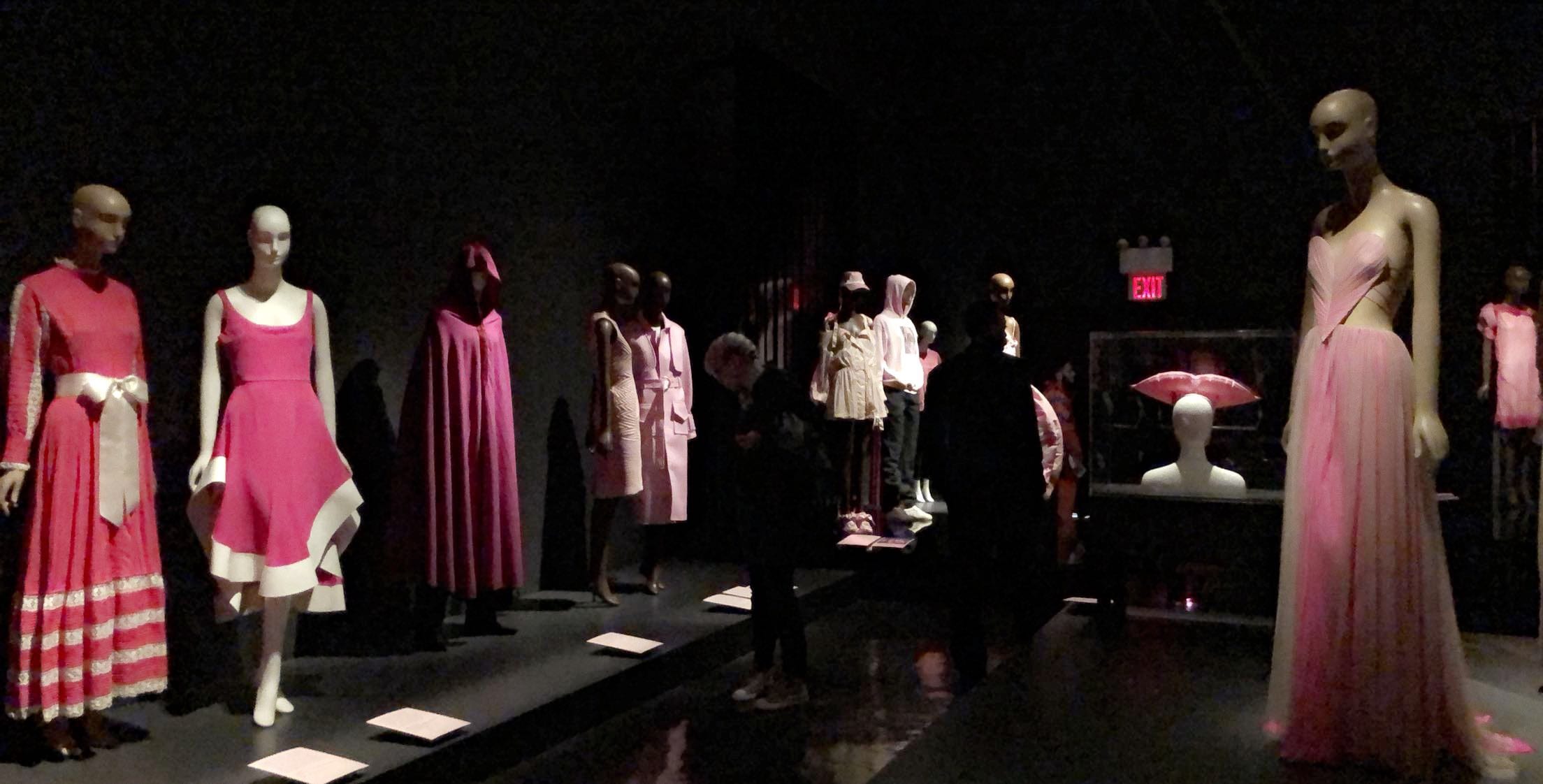Tuesday, October 23, 2018
FIT Museum Reflection
Last week for my studio class we visited the FIT Museum located in New York City. I reached a little late to class and everyone had already left. I took the Uber and reached in 10 minutes.
Located on the first floor of the college’s Goodman Building, FIT Museum was like a hidden gem at no charge. The most interesting exhibitions were “History of Pink”, “Fashion Unraveled” and “Reconstructive Clothes” on the remarking and reworking of clothes. They were an excellent presentation covering fashion through the years and how people treated it. Pink The History Of a punk, Pretty, Powerful Color is organized by the museum’s director. It features almost 80 ensembles from the 18thcentury to the present with designers like Christian Dior, Yves Saint Laurent, Alessandro Michele of Gucci and etc.
The first outfit I saw as soon as I entered was a pink “sherwani” that men wear during their wedding ceremony in Pakistan and India. It was pink in color. Although pink is associated with girls, ballerinas and all things feminine, this article really breaks stereotypes. It corrects popular misconceptions and encourages viewers to question clichés.




Another piece that I really liked was by Stephan Sprouse. With the rise of graffiti art and new music genres like cyber punk, a brilliant neon pink was incorporated into subcultural styles.
The visit to the museum was primarily for us to think about fashion and community for our next Bridge Project. This article fits perfectly for the neighborhood we were assigned, which is why it grasped my attention. It was written that “Distressed fashion has deliberately worn and imperfect aesthetic. Slashed garments became fashionable as far back as the Renaissance, and designers began experimenting with the irregularly bleached fabrics during the 1960’s.”
Overall the museum was very insightful and engaging. There were articles displayed on the recycling of fashion. I was in awe of some of the garments and it was interesting to see how people relate fashion to where they belong from. The era, beliefs held by the people living in it and the culture in that era and in that region plays a considerable role in influencing its fashiontrends.


